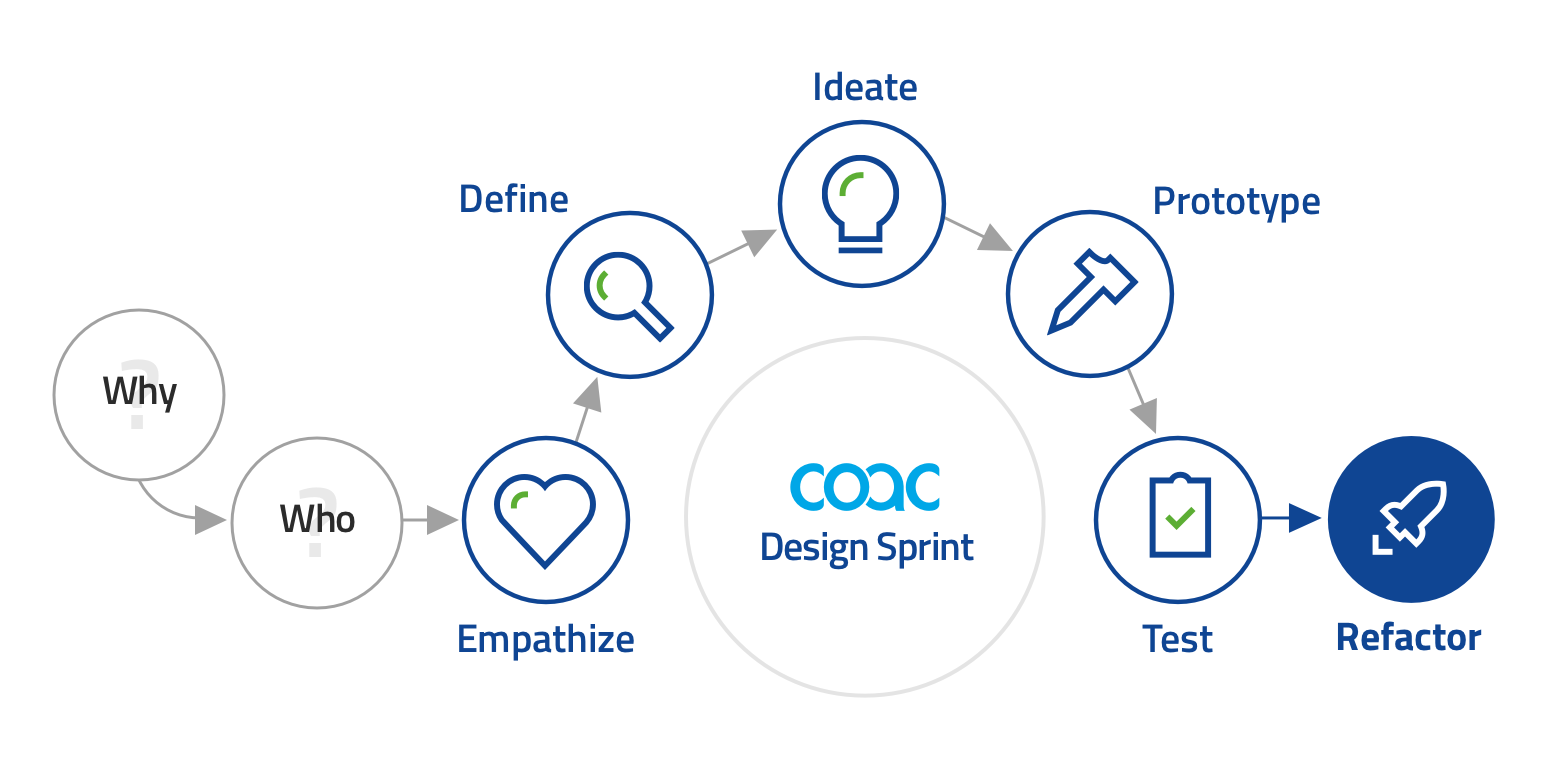The Design Sprint is an approach to create an innovative concept within a short time that has received a lot of recognition over the last couple of years in the business world. In form of a workshop, the design sprint makes use of a variety of design thinking methods to create truly innovative solutions to challenges or problems of the status quo. Instead of ending with a great, but vague idea, the design sprint ends with a well-advanced prototype serving as roadmap for implementation. While vague ideas often get lost and never realised, the prototype is the first step of implementation, which is why the design sprint is immensely popular in the business world.
But our recent experiences show that this is a concept that is not only applicable to the business world, but can be used in all kinds of contexts: Public organisations, non-profit organisation, even educational institutions. And, while the design sprint is usually used to develop digital innovations, it can be a fruitful approach in the analogue world as well. Over the last couple of years, we, coac GmbH, have conducted multiple design sprints and gained valuable experience in setting up and conducting design sprints. Resultant, we have made a couple of improvements to the original concept. In this handbook we will share our experience with you and demonstrate how a design sprint can support all kinds of development processes. From the preparation up to the planning of the individual days of the design sprint and the post-processing it gives you all the instructions to conduct a successful design sprint yourself.
THE DESIGN SPRINT FOR ORGANIZATIONS
Coming from a business-based perspective, the design sprint in its original form is a concept for a quick conception and an implementation of a new product. The opportunities of a design sprint however do not end at the creation of a profitable product. It is a great method for creating out-of-the-box ideas and innovations for all kinds of different organisations and can support the development of new projects, processes, services and business models and thereby include different perspectives in the design of the process. We are going to show you, how the design sprint can be adapted for different settings and what must be taken into account.
BEFORE THE SPRINT
Crucial for a successful design sprint is the preparation. There are several things of great importance to consider before conducting the actual design sprint.
Every successful design sprint starts with a great team of participants. We tell you about our experience in building the perfect team for a specific topic and how to gather the participants. Furthermore, there are several important rules to set for the workshop. The design sprint is based on a creative mindset – thus creating the right atmosphere from the beginning is crucial for the success. Additionally, we tell you which materials you should prepare to execute the methods properly. Preparation is half the battle!
The coac design sprint itself consists of 6 days and 2 days of strategical preparation. Before running the coac Design Sprint, it is important to understand why you want to run this program. Reasons for that might be that you want to break out of the known boarders and/or involve a fully interdisciplinary team and/or want to work towards a fixed deadline. It is also important to define who will use your digital concept in the end – typically the target audience will be internal users, an already targeted user segment or a completely new user segment.

During the coac Design Sprint, first and foremost is empathizing. On the first day the team shares insides and information regarding technology and business. Especially in a multidisciplinary team of people with different backgrounds it is crucial to generate a mutual understanding. Thereafter it will be defined what the sprint should concentrate on – an existing problem or a known potential? The core focus is determined. On the third day it is time to ideate: New ideas are generated, described and mixed up. This leads up to the prototyping: Central ideas are visualised and made available for users and testers. The next steps are testing, testing, testing! The prototype is provided for the relevant target groups and feedback is conducted. The feedback leads up to the last step: Refactoring. The prototype is revised based on the new findings and the first feedback.
For every single day, we recommend a possible timetable and introduce methods to reach the specific goal of the day. The instructions are complemented by experience reports of participants of the hydrogen design sprint.
To get the most out of the design sprint, it is important to have good post-processing. This means documentation, summaries, thinking about your learnings, thinking about possible following sprints and what to do with the prototype. The team of the design sprint promotes the further process of implementation.